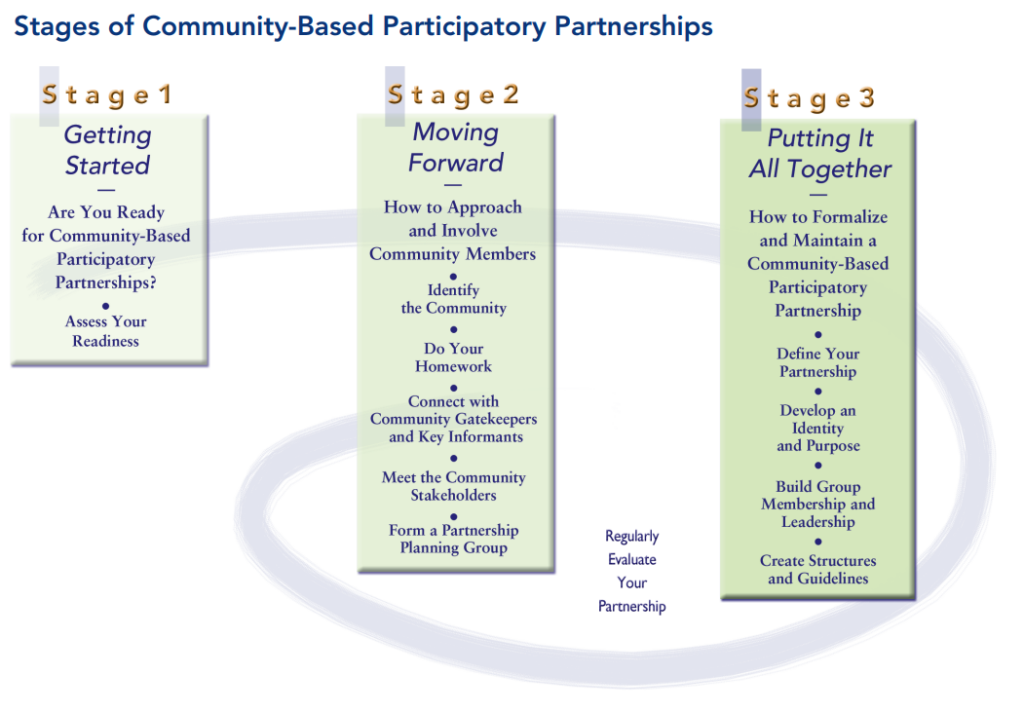Building Partnerships and Collaborators
How can we make community partners not feel like outsiders?
A community-based participatory partnership (CBPP) is a collaborative body of individuals and organizations working together on a common goal or issue of importance to the community. It consists of a mutually beneficial relationship where all parties have shared responsibilities, privileges and power (Connors, 2003).
Key Principles of a Community-Based Participatory Partnership
- Has members who share a common vision, mission, goals and values.
- Has a genuine interest in and commitment to the community.
- Shows mutual trust and respect for partners.
- Recognizes the strengths and contributions of all partners.
- Shares leadership, decision-making power, resources and credit among its members.
- Ensures that each member of the partnership is treated equally.
- Fosters a safe environment for clear and open communication that values feedback from all partners.
- Values the knowledge and expertise of the partners.
- Believes community input is essential.
- Is community driven.
- Values diversity.
- Understands that relationships take time to develop and that they change over time. Adapted from Community-Campus Partnerships for Health, Principles of Partnership (Connors & Seifer, 2000)
Key Benefits of a Community-Based Participatory Partnership
- Ensures greater success by involving people most affected by the problem.
- Creates a collaborative environment and a chance to get to know and network with new partners.
- Fosters an environment of mutual learning and understanding of members’ strengths, assets and limitations.
- Provides credibility that may come from working with other partners.
- Fosters sharing of resources and creative ideas to develop programs to address community needs.
- Reduces the amount of competing and fragmented services.
- Increases financial and other resources to the whole partnership or certain group members.
- Builds community capacity through training and professional development




